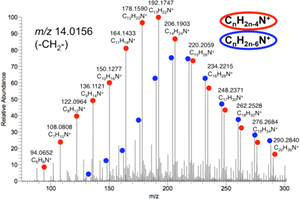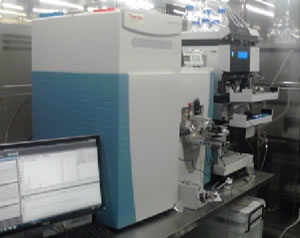
HOME / Departments / Earth and Planetary Sciences / Organic Geochemistry and Cosmochemistry
Organic Geochemistry and Cosmochemistry
-
- NARAOKA Hiroshi, Professor
- YAMAUCHI Noriaki, Associate Professor
- KITAJIMA Fumio, Assistant Professor
- Biological activities have important roles on the evolution of the Earth. We study organic molecules for the better understanding of environmental changes and microbial activities on the Earth and of chemical evolution and origins of life in the universe. Our current research projects include 1) characterization of organic matter in meteorites and returned samples by spacecrafts, 2) molecular study on bacterial and archaeal biomarkers, 3) isotopic study on biomarkers in samples from deep-sea drilling cores and hydrothermal vents, 4) simulation experiments of organic compound formation to clarify their reaction mechanisms and isotope fractionations, 5) development of analytical techniques for trace amount of organic matter in natural samples.
Keywords: Biomarker, Archaea, Origin of Life, Chemical Evolution, Meteorite
Topic 1
We have founded the Research Center for Planetary Trace Organic Compounds (PTOC Center) since 2016 to perform advanced analyses and development over the next 5 years. Ultra-high mass resolution (Fig. 1) and sensitivity will be achieved for extraterrestrial trace organic compounds in meteorites to determine their compositions and structures using a nanoLC-Orbitrap mass spectrometer (Fig. 2) in a clean room to avoid terrestrial organic contamination. We will further develop spatial high-resolution molecular analysis on the sample surface using desorption electrospray ionization.


Topic 2

Archael biomarker is important for the index of several characteristic environments. However, some of these are difficult to obtain (for example, Fig. 3) because these molecules could be obtained for the incubation of organisms which were needed for the extraordinal condition such as strictly anaerobic. On the other hands, these are not so difficult to synthesize chemically. Development of the easy synthetic method of biomarkers, new analytical method for these compounds, tracing of the degradation of the biomarkers for the new compound exploration for the easier analysis are currently underway.
Topic 3
(1) Several meteorites and Precambrian sedimentary rocks contain insoluble macromolecular organic matter. This matter converts its structure gradually from disordered to ordered in the curse of thermal metamorphism and it corresponds to peak metamorphic temperature. Micro-spectroscopy can be useful to examine such insoluble materials. We use the technique to clarify the formation processes of meteorites and carbonaceous micro-structures in the Precambrian black shales/cherts. (2) Several Archaea and Bacteria produce tetraether lipid named isoprenoidal- or branched-GDGTs. Isoprenoidal-GDGTs are used as a paleo-temperature proxy and branched-GDGTs are suggested to correspond to temperature and soil pH. We hope to develop a new proxy based on isoprenoidal- or branched-GDGTs.